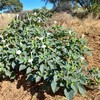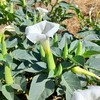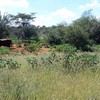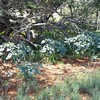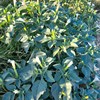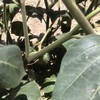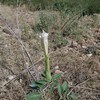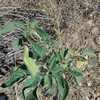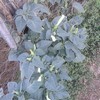Summary details for Datura inoxia
Downy thorn apple
Datura inoxia
Common names: Downy thorn apple (English); Harige stinkblaar (Afrikaans); Stechapfel (German); Omutimbmiuriri (Herero); Enumu (Oshiwambo)
Origin: Uncertain, possibly South America
Description
Erect annual herb, up to ± 2 m high. Stem olive green, grey-velvety. Leaves large, ovate, dark green, grey-velvety (denser when young), bad-smelling; margin smooth to shallowly lobed; tip tapering; petiole long. Flowers very big, up to 200mm long and 120mm wide, trumpet-shaped, white. Seed capsules nodding, not carried erect, almost spherical, thick-papery, covered with numerous slender spines up to 10mm long.
Distribution/Discussion
Highly invasive aliens that produce numerous seeds. Common along road verges, in dry water courses, on river banks, in pans and in disturbed ground, often forming dense stands. The seeds (‘malpitte’) are a common cause of human poisonings, which are sometimes fatal. Horses, cattle, sheep, and ostrich are also susceptible to poisoning by Datura species, which causes typical signs, including dilation of pupils, dry mouth with red mucous membranes, colic , tremors and convulsions, while very high doses may cause excitement and mania.
» See all records of Downy thorn apple Datura inoxia





